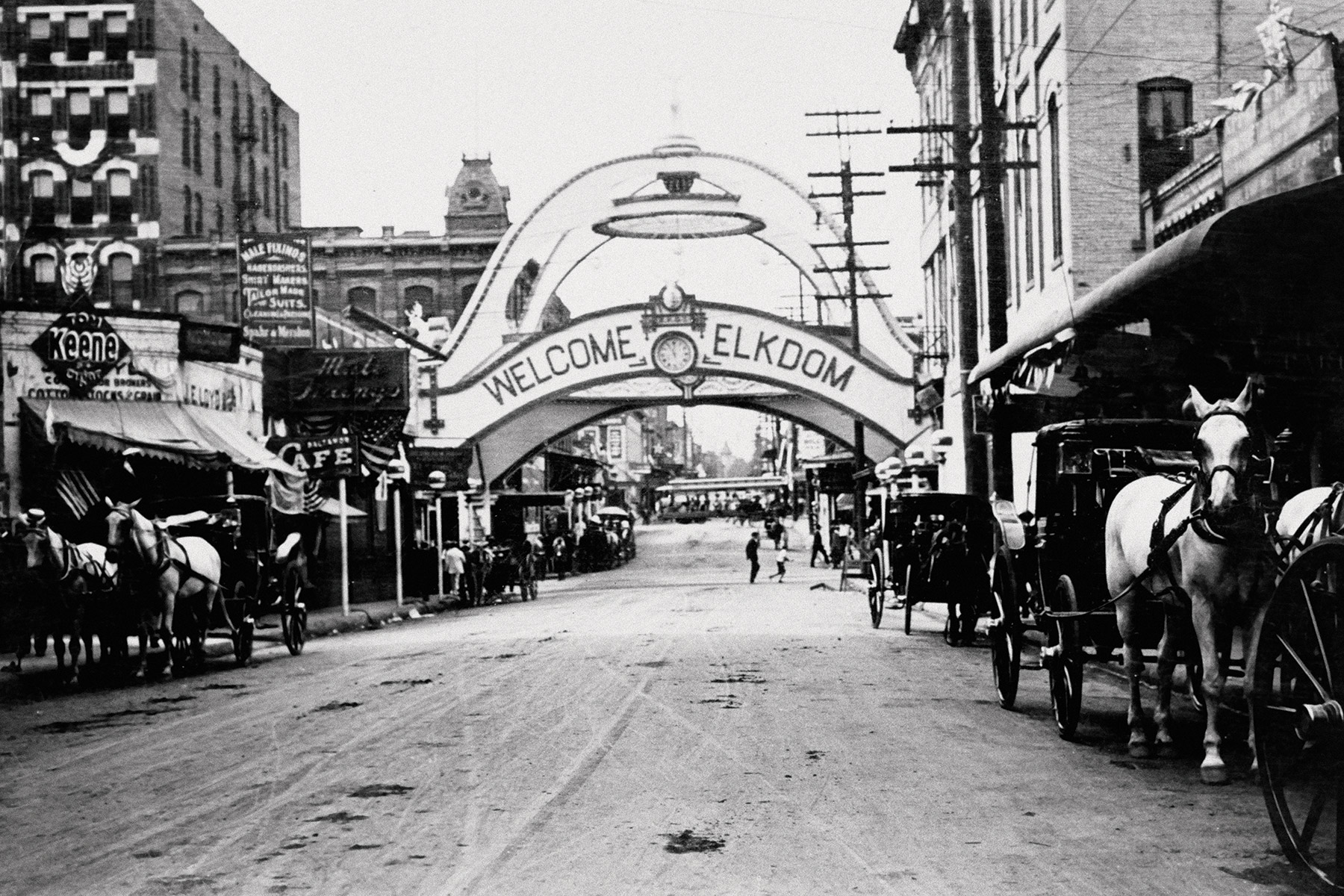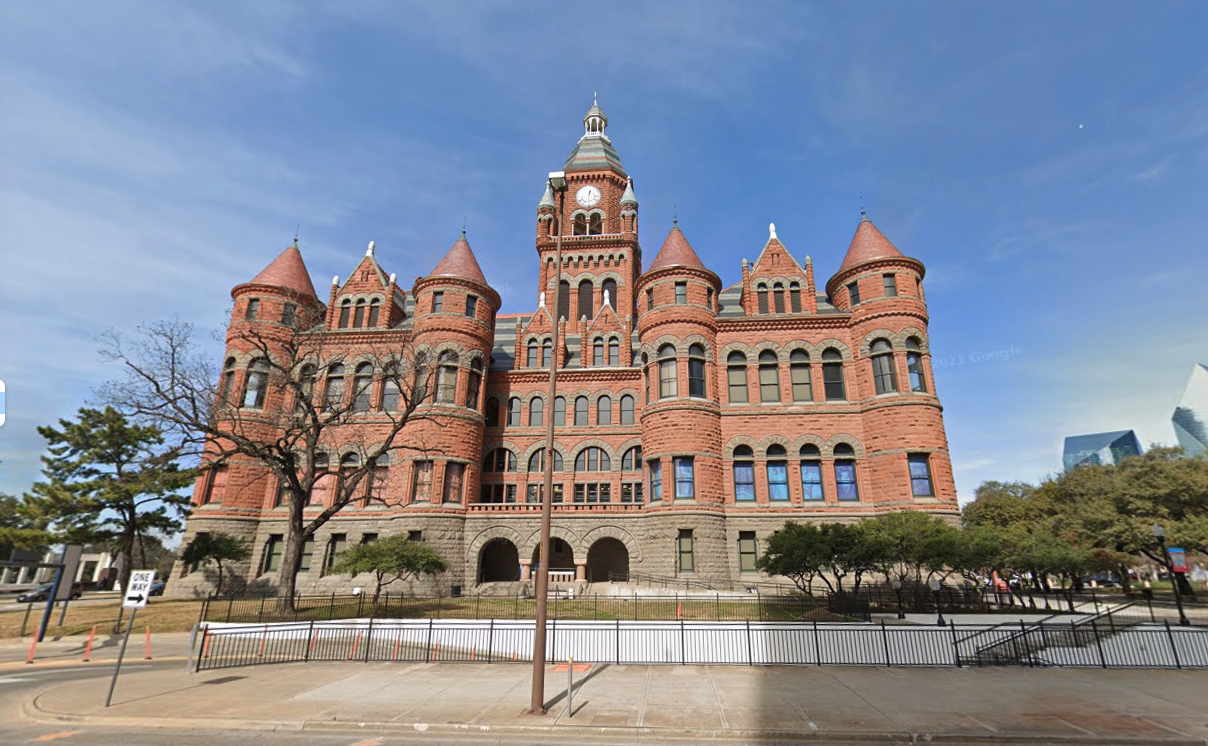When a mob threw Allen Brooks out of a second story window at the Dallas County Courthouse in 1910, beat him, and then dragged him to Main and Akard to hang him from a telegraph pole, they didn’t know whether he was guilty of the crime for which he was being tried.
But it really didn’t matter—lurid newspaper reports and word-of-mouth made it all but certain that Brooks, a Black handyman accused of the attempted rape of a three-year-old White girl, would die.
“Just getting blamed for a rape is bad enough,” said Dallas County Equal Justice Initiative member Ed Gray in a Remembering Black Dallas video. “What occurred next was an atrocity.”
In 2021, the Texas Historical Commission recognized the attack and lynching with a historical marker at Main and Akard. Thursday morning, a secondary state marker will be installed at the southwest corner of the Old Red Courthouse, near the window Brooks was thrown from.
Brooks was indicted by a grand jury on February 24, 1910, a day after he was accused of attempted rape.
He never got a trial, evidence was never examined, and his lawyers kept conveniently finding reasons to avoid representing him. County Sheriff Arthur Ledbetter moved him around North Texas to avoid vigilante justice—first to Fort Worth, then to Denton, then to Sherman, and finally McKinney.
“The juries of Dallas County seldom fail to convict,” Dallas County Attorney Dwight Lewelling said in a public statement in an attempt to persuade against mob action.
But he still had to be tried, and so he returned on March 3, 1910, hidden in a jury room next to the criminal district courtroom on the second floor. It was a week after the alleged crime, and in that time the word had spread. People from outlying counties like Ellis, Hunt, and Rockwall joined the fray, until the mob ballooned to an estimated 3,000 that ultimately overpowered law enforcement, found Brooks, and tossed him from the window.

By the time they brought him to the three-story Elks Arch at Main and Akard, the crowd had grown to nearly 5,000. After lynching Brooks, the crowd reportedly attempted to take two more Black inmates from the Dallas County Jail, but deputies had moved them first to Fort Worth. The Tarrant County sheriff’s office refused to take them, and so they went on to Cleburne. (At least one of those inmates—Julius “Bubber” Robertson—would be hanged in the stairwell of the Dallas County Jail roughly two months later.)
“While the attorneys were preparing the motion, a mob entered the courtroom and killed the defendant,” Judge Robert Seay wrote of Brooks’ case. “Case dismissed.” Brooks was one of five Black men lynched in Texas that year.
Brooks’ lynching was one of the most documented such attacks in the state with photos of his body—and postcards—in wide circulation. Newspapers all over the state wrote about it.
“A great day we had in Dallas,” someone wrote on the back of a postcard commemorating the lynching, “a Negro was hung.”
Nobody was ever held responsible for the attack, despite Seay impaneling a grand jury to see if anyone could be indicted.
“Even Seay, however, felt it important to state the obvious: that Brooks still deserved to die,” wrote Dr. Chris Dowdy, vice president of strategy at Forest Forward, in his unpacking of the events.
Brooks is one of 19 Black people hung or lynched in Dallas, according to researchers, including Jane Elkins, the first person to be executed in the state of Texas. She was hanged in at the Dallas County Courthouse in 1853, accused of murdering her White enslaver when he attempted to rape her.
Noting these events, the late Dr. George Keaton Jr. said in an interview before the first marker was installed, is an important part of the city’s history.
“What happened in Dallas, we want to remember it,” he said. “We’re just doing what has been historically done with other racial groups, and now it’s our time.”
Dr. Michael Waters, pastor at Abundant Life African Methodist Episcopal Church, said that as incidents of racial hate crimes begin to increase again, memorializing Brooks’ death as a tragedy that arose “from blind rage” serves as a reminder to teach and face the truth about the city’s history.
“The late poet laureate Maya Angelou once stated, ‘History, despite its wrenching pain, cannot be unlived, but if faced with courage, need not be lived again,’” he said in a statement.
The second marker will be dedicated in a ceremony at 10 a.m. Thursday in the lobby of the Old Red Courthouse on Houston St. Speakers will include Waters, Gray, Dowdy, Dallas County Judge Clay Jenkins, Commissioner John Wiley Price, Dr. Deborah Hopes of Remembering Black Dallas, Amber Sims of Young Leaders Strong City, Rev. Yulise Reaves Waters of Abundant Life African Methodist Episcopal Church, Rev. Virzola Law of Northway Christian Church, and Dr. Andy Stoker of the Thanks-Giving Foundation.
Author






